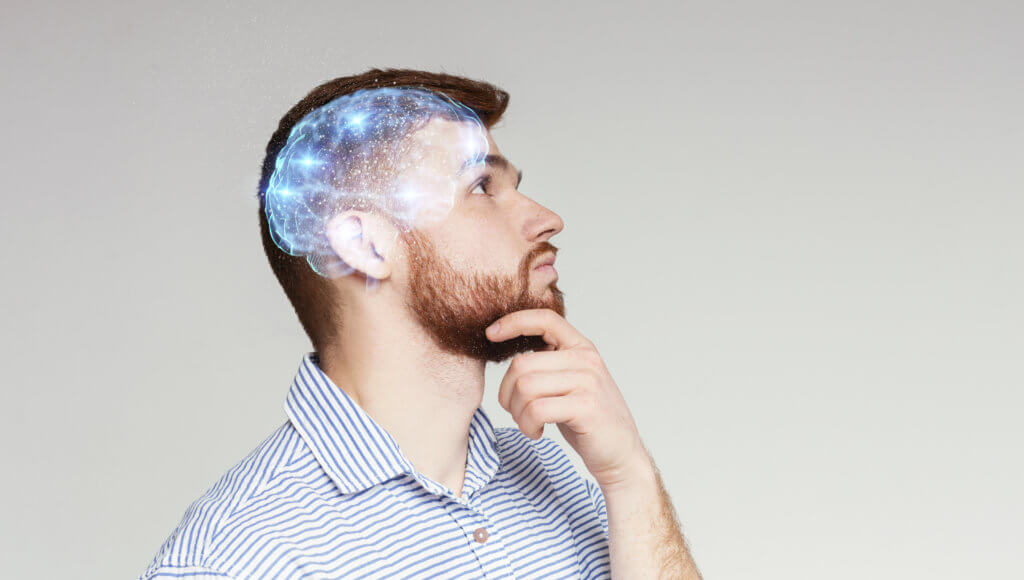TUCSON, Ariz. — Quiz-themed game shows that challenge participants to think fast and answer questions rapidly are, by their very design, highly stressful for the brain. While these types of programs have been a pillar of TV programming for decades, researchers from the University of Arizona now suggest that quiz shows also hold serious research value. Specifically, the next time you watch “Jeopardy!” keep an eye on how much the contestants blink — it may reveal how their brain is handling stress.
Scientists explain that by analyzing contestants’ behavior and patterns of blinking on the long-running British quiz TV show “Mastermind,” they were able to assess human physiology under conditions of stress in a way that would have been absolutely impossible to reproduce in a lab.
“This is a dream I’ve had for a long time – to try to get physiological information out of video signals,” says Robert Wilson, senior author of the paper, who is an associate professor in cognition and neural systems at the UArizona Department of Psychology, in the College of Science, in a university release.
On “Mastermind,” participants sit in a big leather chair and answer rapid-fire questions under the glare of spotlights as a camera slowly zooms in on their faces. So, the show’s bright lights and slow camera work made it quite easy for researchers to identify blinks, and the unavoidable stress of being interrogated on national TV just can’t be re-created in a lab.
“This is a feasible method for doing video-based neuroscience in outside-the-lab conditions so that we can get into situations that are closer to real-world scenarios,” adds Skyler Wyly, the lead author of the study.
Wyly began this work as an undergraduate student at UArizona and is now a doctoral student at Duke University.
Blink Fast: What the game show study revealed
Understanding exactly how blinking relates to cognitive effort still requires more research, particularly regarding real-world tasks. However, Prof. Wilson points to the hypothesis that the more stressed humans are, the more they blink.
“We are yet to know about all the cognitive processes that modulate blinking,” Wilson says.
To research this topic, the study authors analyzed 25 episodes from two seasons of the game show, collecting data on 100 contestants along the way. Then, a team of close to 60 research assistants tracked the onset and offset of every question and every response among contestants, in addition to the number of blinks.
After that, the research team moved on to analyzing the data in an effort to ascertain if and how blinking varied across individuals at different points in the game. They compared those findings with results tied to less stressful experiments performed in previous lab-based studies.
Prof. Wilson notes one of the most important findings from the lab is that blinking acts like a “punctuation of thought,” and this even held true while on TV. Participants blinked at the “punctuation marks” of the game, both at the beginning of each question and at the start of their response. Contestants also blinked less while they were thinking about their answer, which gels nicely with the findings from the lab.
The stress of the game show was also quite apparent when it came to contestants’ blinking; their blink rate was nearly twice the number of the usual 20 blinks per minute seen in individuals at rest.

‘Exactly what we need to study’
Some findings, however, did differ from lab tests. For instance, during the TV show, older contestants tended to blink more than younger participants, and women blinked more than their male counterparts. Study authors noted no such differences among those groups in a lab setting, on the other hand.
The research team observed additional behavioral differences as well. During the lab tests, participants usually slowed down and responded more carefully and accurately after making a mistake. This didn’t happen during the U.K. game show.
Study authors can’t say at this point what is causing these differences between the lab and TV, but Prof. Wilson considers these fluctuations the most exciting part of the research. He adds that one of the biggest questions in psychology right now, in a very broad sense, is how much of what is observed in lab settings actually translates to what is going on in the real world.
“This question is critical, not only for our basic understanding of the mind, but also more practically if we want to find lab tests that can diagnose mental illness,” Prof. Wilson says.
The team at UArizona says blinks are just the beginning, and there are tons more vital information in video signals. The ways in which people look, breathe, and fidget in their seats can now be detected and analyzed by modern computer vision techniques. Ideally, such methods can help researchers attain a multidimensional measure of physiology.
“This is exactly what we need to study – the psychophysiology of real human behavior and real human thinking,” Prof. Wilson concludes.
The study is published in the journal Psychophysiology.
You might also be interested in:
- Best Game Shows Of All Time: Top 5 Programs According To Experts
- What’s the fastest movement that humans can make? It’s not blinking, fascinating study shows
- Doing math is so stressful 1 in 5 adults say it makes them sick!

